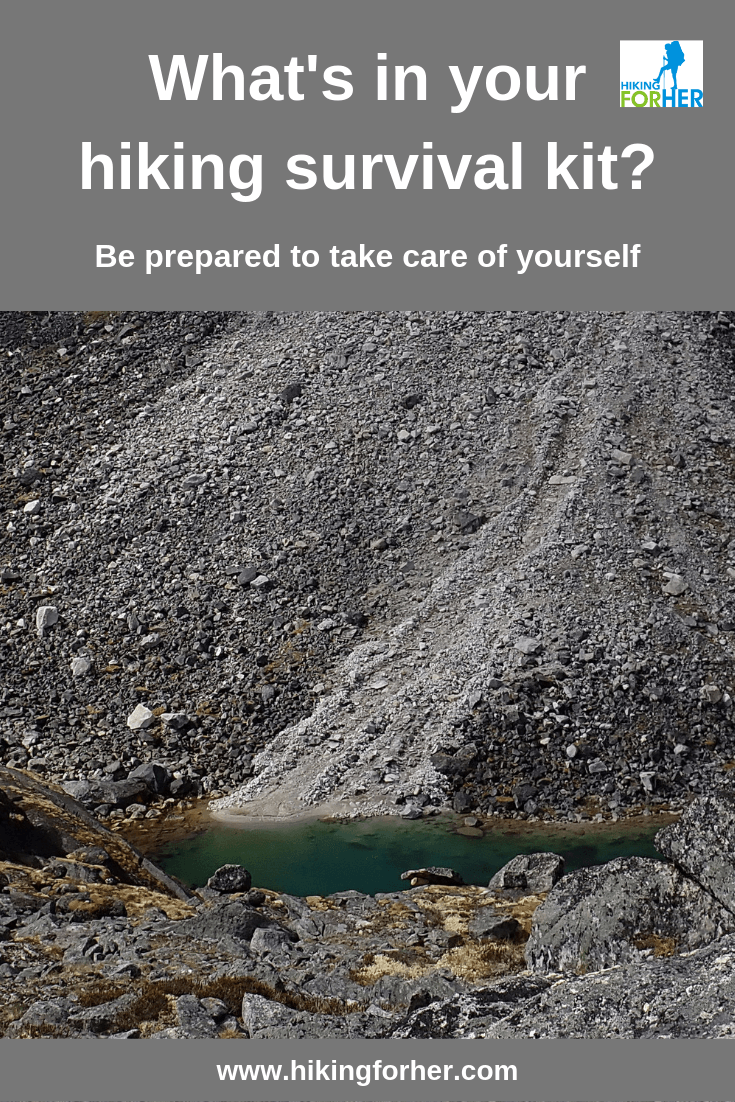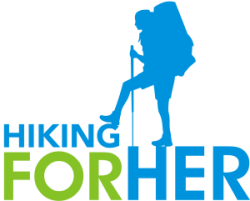
Hiking Survival Kit:
Make One And Carry It On Every Hike
By Diane Spicer
A hiking survival kit is not a first aid kit.
What's the difference?
First aid supplies allow you to deal with cuts, burns, scrapes, bruises, insect bites, broken bones or other trail medical problems. These supplies are part of a survival kit.
A hiking survival kit gives you the technology to survive temperature extremes, keep yourself warm and calm until either help arrives or you can get to a source of help.
- Avoid getting lost, or manage the panic, with these tips.
The hiking ten essentials are also part of a survival kit, and you should carry them at the very least, every time you hike.
The beauty of putting together or purchasing a hiking survival kit?
You can keep it in your car and use it to deal with natural disasters (tornado, hurricane, flood, wind storm, blizzard) that catch you away from shelter.
- Just don't forget to transfer it into your backpack before you leave the trailhead.
- Or maybe have two of them, one in the car and one in your pack at all times.
Do I really need a hiking survival kit?
One of the most basic things you need to do as a hiker: Rig the odds in your favor in case something goes wrong on your next hike.
Your physiology as a human being requires you to maintain a constant body temperature, replenish lost fluids (water intake), and eat every 24 hours at a minimum.
Can you push those numbers?
Yes, in an emergency, but time is against you, depending upon your situation.
- A cold, wet lost hiker faces a set of challenges that a hot, dehydrated injured hiker does not, but a hiking survival kit will get both of them through it.
FYI, here are some tips for those scenarios:
What a basic hiking survival kit contains
A basic kit can help a hiker until conditions become more favorable for moving, or until help arrives.
The bare essentials in your survival kit include materials to battle your main problems in a survival situation:
- Protection from the elements, in the form of a lightweight emergency blanket; doubles as a signalling device if made of reflective material
- Gloves and a hat to safeguard your body temperature
- Illumination, to eliminate having to wait for daylight (Tip: a small headlamp like this leaves your hands free)
- Signalling devices that don't depend on daylight: whistle or a light stick
- Communication device: personal locator beacon or satellite messenger
- Safe drinking water (read this review for tips)
- Fire starting materials that work even in the absence of dry fuel: specially coated waterproof matches, for example. A basic lighter works, too. Pyro Putty is another great option for fire starting in adverse conditions.
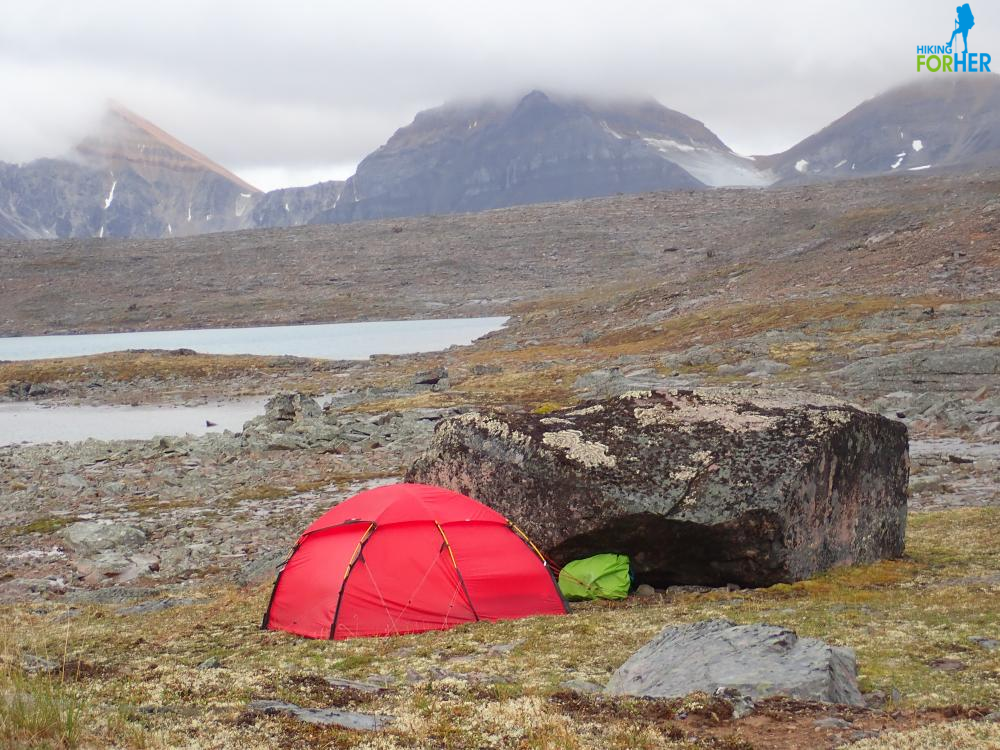 Could you start a fire or stove in these soggy conditions, using only what's in your backpack right now?
Could you start a fire or stove in these soggy conditions, using only what's in your backpack right now?
Ideas for making your own hiking survival kit
Find a waterproof, lightweight, small container or pouch that you can fit easily in your backpack.
- One approach if pack weight is already light: Use a small coffee can with a tight fitted lid. Fill it with the above safety items. Use the can for boiling water over a fire, obtaining water from a distant source, or holding berries, minnows or other food.
- Another approach: Use a plastic or water repellent sack to hold your survival items. Here's one I use.
- To keep your items safe from water and dampness, upgrade to this waterproof sack.
Use good stuff without going overboard
Waterproof and lightweight are important words, so don't "make do" with a flimsy plastic bag that will rip and expose your survival kit contents to rain, mud or wind.
What do you already have that would meet the challenges outlined above?
A whistle, a lighter, a mini flash light, a signal mirror, a roll of dental floss or fishing line, a heavy duty garbage bag, some duct tape - those might be easy to find around the house.
Water treatment tablets, a mylar emergency blanket, fire starters (or just coat a few cotton balls with petroleum jelly), those might take some forethought and a trip to a gear store.
- Note that these items address your top concerns: warmth and clean water.
- Don't leave them out of your hiking survival kit.
Another approach to clean drinking water: a personal water filter called a Lifestraw. Read my review.
And I would be remiss if I neglected to remind you of the importance of carrying the ten essentials in addition to your survival gear.
- Extra food, water and clothing will really make a difference in your survival odds. What a relief to find an extra shirt, gloves, a hat and a scarf in your pack when you really need them!
- Not to mention your ability to avoid panic.
Be prepared for pain
with your hiking survival kit
One more thought: It's possible that if you're in a survival situation you or a hiking companion are also in pain.
Carry pain relief on every hike, to allow your thoughts to be as unclouded as possible as you deal with your circumstances.
- A basic first aid kit like this one should ride along with you in the bottom of your backpack, where hopefully you never need to touch it.
- This is especially important if you're hiking with kids.
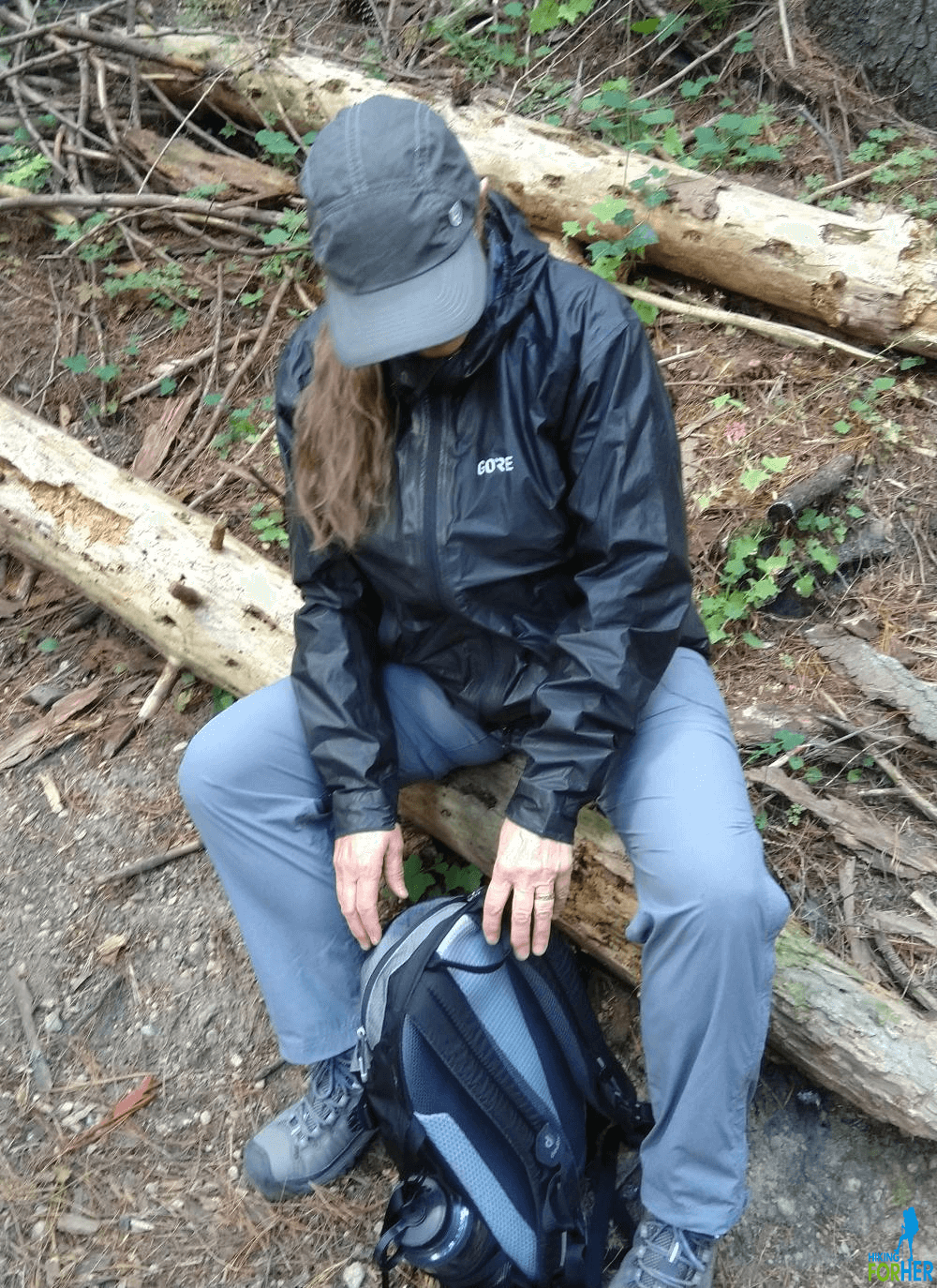 What's in your backpack to keep you safe?
What's in your backpack to keep you safe?
Your behavior counts as a survival tool
By putting together a survival kit AND carrying it with you on every hike, you've demonstrated some smart behavior.
It also makes sense to use the materials in your immediate vicinity to augment your survival kit if you get into a survival situation.
Take a careful look at your surroundings, with an eye for how to survive a cold, wet, dark, unpleasant night.
- Pile up dry leaves around you (and stuff into your clothing) for warmth.
- Hunker down under a tree with overhanging downward branches in a rain storm or snow squall.
- Build a crude lean to against a sturdy tree trunk with sticks and branches, then layer tree boughs over it to break the wind.
- Catch a few frogs or bugs for dinner.
- Dig into a snow bank to escape freezing temperatures.
- Sit behind a windblock or drop down from exposed areas.
Think: What do the animals who live here do to stay warm and dry?
Read this book on essential skills for survival.
Maximizing safety with these additions
to your hiking survival kit
To be as prepared as possible to meet an emergency situation with calmness, consider this list of additional "cushion" of survival items:
- signal mirror (get found)
- fire striker (stay warm)
- knife with LEDs in handle (illuminate your fire building)
- cords, fish hooks, fishing line (find food)
- a bivy sack to crawl into (maintain body temperature)
There's no reason you can't add these items to your own survival kit, but life happens.
We get busy.
We forget.
We procrastinate.
We even get a little arrogant ("It will never happen to me" thinking).
So I'm asking you right now to put those items in your shopping cart, whether online or an outdoor gear store.
For yourself, and for those who love you.
It's an inexpensive investment in your hiking well being.
And between you and me, I just feel better when I carry a survival kit. I know that I'm as prepared as possible to take care of myself.
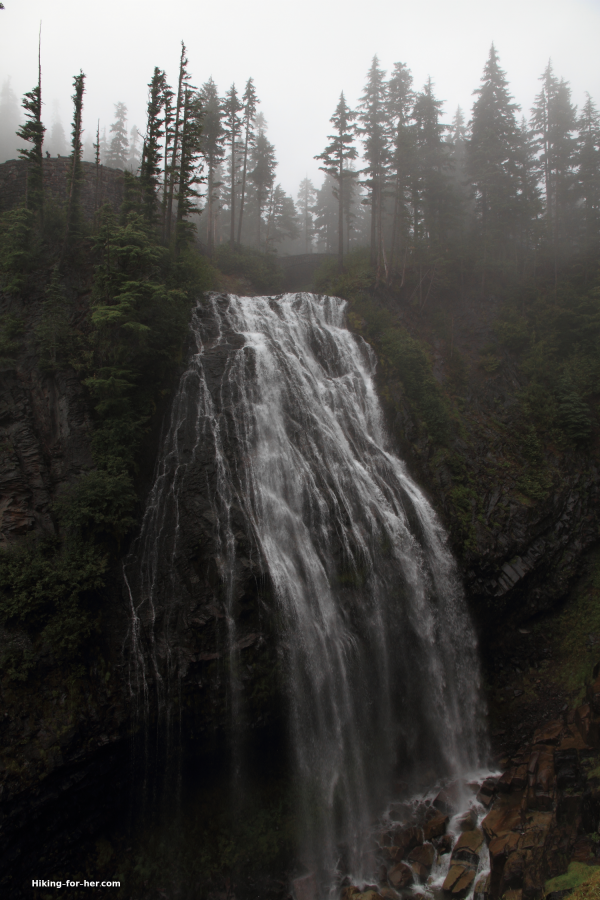 Rain is going to happen. Are you prepared?
Rain is going to happen. Are you prepared?
A few more thoughts on hiking survival gear
Regardless of whether you make or purchase a hiking survival kit, become familiar with every item it contains.
Don't hope the day never comes to use the items. That's setting yourself up for disastrous panic.
- Tip: Practice putting together a fishing device, or collecting morning dew, when you have some down time on a backpacking or camping trip.
Taking responsibility for your safety on a hiking trail is one characteristic that distinguishes a trail hardened hiker from a casual hiker.
- Carrying a survival kit in the outdoors is the way to take responsibility and keep yourself, and your trail buddies, from escalating a bad situation into a disaster.
Another kind of kit to carry
Women hikers have hygiene issues that men don't have to deal with.
Ladies, you know what I mean!
Put together a female hiker hygiene kit using these tips.
It's just another skill in your outdoor skills set, making you a rock solid hiking woman. Welcome to the club!
Home page > Best Hiking Tips >
Hiking Survival Kit
|
I get emails all the time about what I wear, eat, carry and love to use on the trail. That's
why I provide affiliate links to you: the best gear that I use myself and have seen used by other hikers is instantly
available for your consideration, and the gear company sends a few
pennies per dollar to this reader-supported hiking website. There is no added cost to you! Everyone ends up a winner: Great gear for you, strong gear companies, and more free hiking tips for everyone. Thanks very much for your support. It's warmly and sincerely appreciated. It also helps send these hiking tips to all your virtual trail buddies around the globe. |
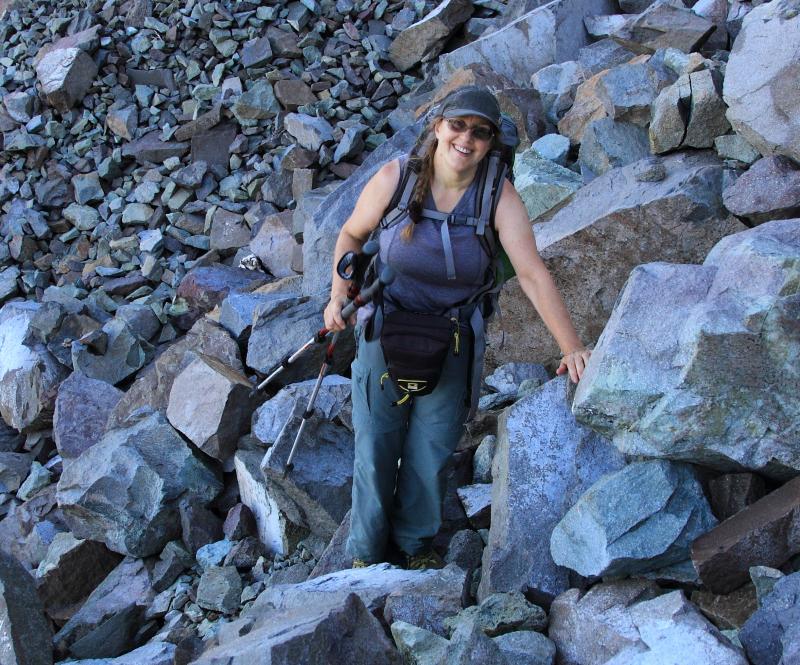 |
